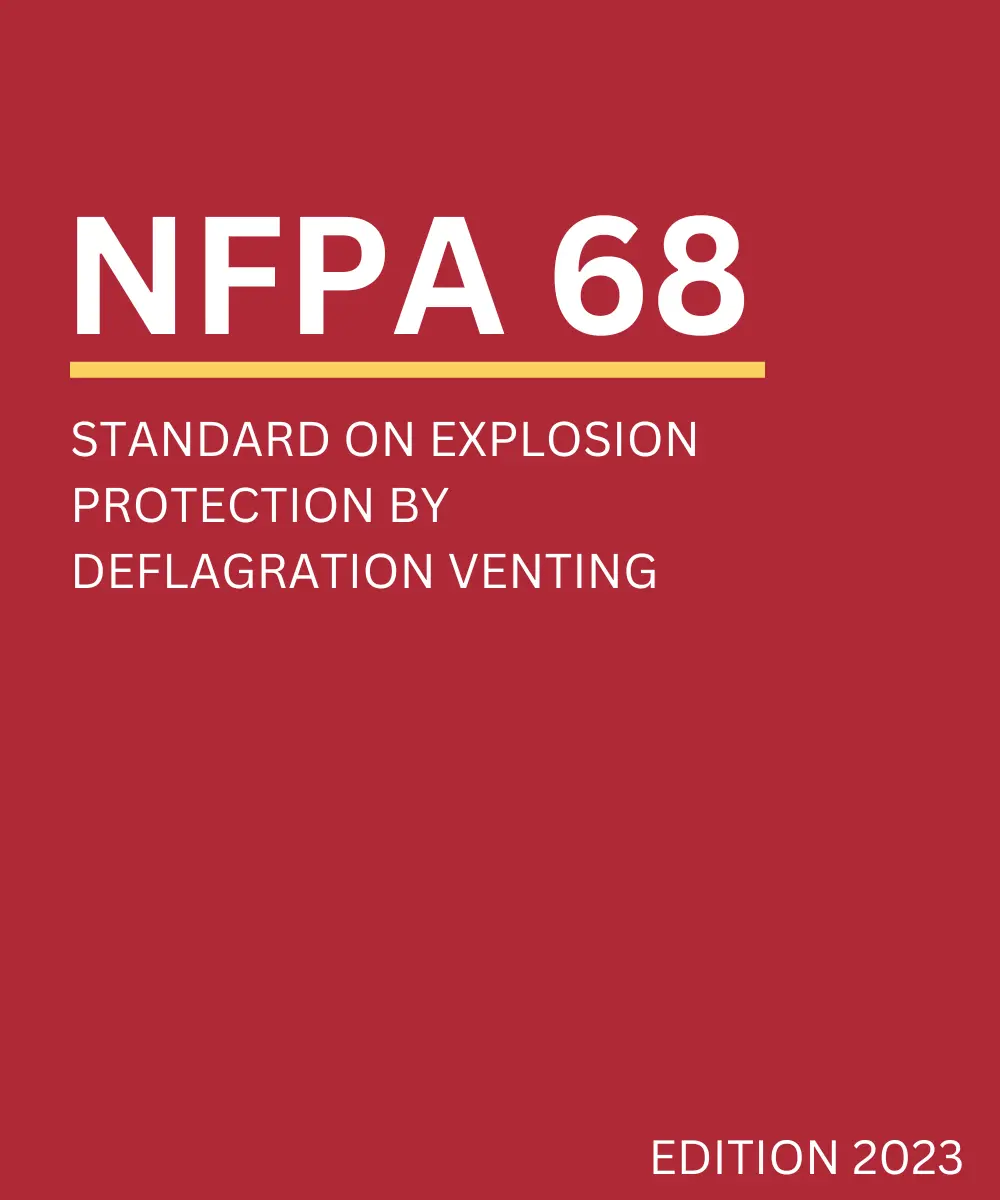
This standard applies to the design, location, installation, maintenance, and use of devices and systems that vent combustion gases and pressures caused by a deflagration within an enclosure, ensuring that structural and mechanical damage is minimized.
Introduction
NFPA 68 outlines guidelines for protecting structures from the dangers of deflagration explosions through venting. The 2024 edition includes updated recommendations to optimize explosion venting systems, ensuring safer environments for industries handling combustible dust and gas.
Key Changes in the Latest Edition
- Venting Efficiency: Improved vent sizing and positioning guidelines.
- Design Updates: Clarified design requirements for vent systems in various industries.
- Integration with Other Protection Methods: New recommendations for combining venting with suppression systems for enhanced protection.
Notable Features of the Current Version
- Clearer guidelines for the effective design and placement of explosion vents.
- Updated recommendations for combining deflagration venting with other safety measures, such as suppression.
- Enhanced focus on venting efficiency in minimizing explosion damage.
Practical Implications
Industries using combustible dusts or gases must adopt the updated venting and explosion protection strategies to ensure compliance with the latest standards and improve safety.
Conclusion
NFPA 68 (2024) strengthens explosion protection measures by refining venting strategies, enhancing the overall safety of industrial facilities.
Access NFPA 68 Now!
For more detailed information, consult the NFPA 68 (2024) edition or engage an explosion protection specialist to optimize venting and safety systems in your facility.
Book a free demo
Digitalize your Inspections with ZenFire
- Faster Inspection
- Deficiency Reporting
- Proposals
Company
Support and Services
- (206) 456-8988
- 236 W 27th st Floor 12, New York, NY 10001, United States
- 299 Fremont St APT TH313, San Francisco, CA 94105
- A-302, Nyati Tech Park, New Kalyani Nagar, Wadgaon Sheri, Pune-411014
- hello@zentrades.pro

